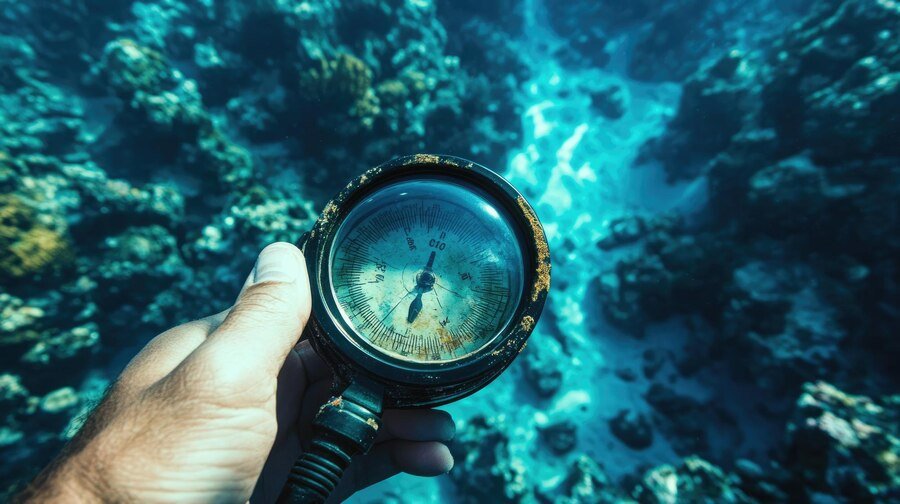The ocean is a vast and mysterious realm, teeming with life and secrets. One of the most critical elements sustaining this aquatic wonderland is oxygen. But how do we measure the levels of this essential gas in such a deep ocean dark environment? Understanding deep ocean dark oxygen levels in the ocean isn’t just an academic exercise; it’s vital for maintaining marine ecosystems and ensuring the health of our planet. From tiny plankton to massive whales, every creature relies on sufficient oxygen to thrive. As we dive deeper into this topic, we’ll explore various methods used to assess these crucial levels, new technological advancements making waves in measurement techniques, and what low oxygen conditions mean for marine life. Join us as we uncover the significance of monitoring oxygen levels beneath the surface!
The Importance of Measuring Oxygen Levels in the Ocean
Measuring oxygen levels in the ocean is essential for understanding marine health. Oxygen is a crucial component for most marine organisms, impacting everything from plankton to fish populations.
Low oxygen zones, often referred to as “dead zones,” can lead to significant declines in biodiversity. These areas create inhospitable environments where few species can survive.
Furthermore, monitoring oxygen helps scientists grasp broader environmental changes. Factors like climate change and pollution directly influence these levels, affecting entire ecosystems.
The relationship between phytoplankton productivity and available oxygen cannot be overstated. Healthy blooms of phytoplankton not only produce much of the world’s oxygen but also serve as foundational food sources in oceanic food webs.
Understanding how human activities alter these dynamics allows us to implement better conservation strategies aimed at preserving our oceans’ delicate balance.
Methods for Measuring Oxygen Levels in the Ocean
Measuring oxygen levels in the ocean is crucial for understanding marine ecosystems. Various methods are employed to gather accurate data.
One common approach involves using chemical titration, where samples from different depths are analyzed. This traditional method provides reliable results but can be labor-intensive.
Another innovative technique utilizes sensors and probes that continuously monitor oxygen levels. These devices can be deployed remotely, offering real-time data on changing conditions throughout the water column.
Advancements like autonomous underwater vehicles equipped with oxygen-sensing technology allow researchers to explore deep ocean dark areas more effectively.
Satellite remote sensing is also gaining traction, providing broad-scale assessments of surface oxygen concentrations.
Each method has its strengths and weaknesses, contributing valuable insights into our oceans’ health and dynamics while helping scientists track critical changes over time.
Advancements in Technology for Measuring Oxygen Levels
Recent advancements in technology have transformed the way we measure oxygen levels in oceanic environments. Innovative sensors and devices are now capable of providing real-time data, allowing researchers to monitor changes with remarkable precision.
One notable development is the use of autonomous underwater vehicles (AUVs). These robots can navigate deep ocean waters equipped with sophisticated oxygen sensors. They collect valuable data from locations that were previously hard to reach.
Another exciting advancement involves optical sensors. These tools utilize luminescent properties to detect dissolved oxygen accurately, even under challenging conditions like high pressure and low light found in dark ocean depths.
Additionally, satellite remote sensing has emerged as a game-changer. It enables scientists to assess surface-level conditions affecting deeper layers, offering a broader perspective on global trends related to marine hypoxia.
These cutting-edge technologies are paving the way for improved understanding of our oceans’ health and their critical roles in supporting life on Earth.
Challenges and Limitations of Measuring Oxygen Levels in the Ocean
Measuring oxygen levels in oceanic environments presents a range of challenges. One significant issue is the sheer depth and vastness of the oceans. The deep ocean dark oxygen regions are often difficult to access, making data collection sporadic.
Another challenge lies in the variability of conditions. Factors like temperature, salinity, and pressure can alter readings significantly. This makes it hard to obtain consistent results across different locations and depths.
Instrumentation also poses limitations. Many devices are sensitive and require regular calibration to ensure accuracy. Environmental interference can affect measurements too—biofouling or sediment can obscure sensors.
Moreover, funding for extensive research initiatives is frequently limited. Without adequate resources, continuous monitoring becomes an uphill battle. These factors combine to create a complex landscape for scientists trying to understand oxygen dynamics underwater.
Implications of Low Oxygen Levels on Marine Life and Ecosystems
Low oxygen levels in oceanic environments pose significant threats to marine life. Many species rely on adequate oxygen for survival, growth, and reproduction. When these levels drop, fish and other aquatic organisms struggle to thrive.
In areas known as hypoxic zones, marine creatures may experience stunted growth or even mortality. This imbalance disrupts the food web, impacting predators that depend on smaller fish for sustenance.
Coral reefs are particularly vulnerable. They require a stable environment rich in oxygen to flourish. Low levels can lead to bleaching events, which devastate entire ecosystems.
Furthermore, low oxygen conditions contribute to harmful algal blooms. These blooms deplete available oxygen further and release toxins detrimental to both wildlife and human health.
The cascading effects extend beyond individual species; they alter community dynamics and ecosystem resilience over time. Understanding these implications is crucial for conservation efforts aimed at protecting our oceans’ delicate balance.
Efforts to Address and Improve Oxygen Levels in the Ocean
Efforts to address oxygen depletion in oceanic environments are gaining momentum. Scientists and environmentalists collaborate on various initiatives aimed at restoring balance.
One approach focuses on reducing nutrient runoff from agriculture. Excess fertilizers lead to algal blooms, which consume oxygen when they decompose. By promoting sustainable farming practices, we can mitigate this issue.
Marine protected areas play a crucial role too. These zones help preserve habitats that support diverse marine life and promote natural processes that enhance oxygen levels.
Innovative technologies also contribute significantly. Ocean monitoring systems provide real-time data about oxygen concentrations, guiding conservation efforts effectively.
Community involvement is essential as well. Engaging local populations through education fosters a sense of responsibility toward protecting marine ecosystems.
Restoration projects involving seagrass and mangroves aim to improve water quality while enhancing habitat complexity for fish species, ultimately benefiting the entire ecosystem’s health.
Understanding the Importance of Oxygen Levels in Oceanic Environments
Oxygen levels in oceanic environments are vital for sustaining marine life. They support diverse ecosystems ranging from vibrant coral reefs to the mysterious depths of the deep ocean’s dark oxygen zones.
Marine organisms rely on dissolved oxygen to survive. Fish, crustaceans, and even microscopic plankton depend on it for respiration. Low levels can lead to hypoxia, where creatures struggle to breathe and thrive.
Healthy oxygen levels enhance biodiversity. Areas rich in oxygen often teem with life, creating a balance that benefits both flora and fauna. This balance sustains food webs crucial for human consumption as well.
Understanding these dynamics is essential for conservation efforts. As climate change alters our oceans, monitoring oxygen becomes imperative to safeguard marine habitats and the livelihoods they support. Without this knowledge, we risk losing not only species but entire ecosystems that play a role in global health.
Traditional Methods of Measuring Oxygen Levels
Traditional methods of measuring oxygen levels in oceanic environments have been around for decades. One common technique involves the use of Winkler titration. This method is a chemical process that determines dissolved oxygen concentration by adding reagents to a water sample.
The sample undergoes a series of reactions, resulting in the formation of iodine, which can then be quantified. It’s highly accurate but requires careful handling and skill to perform correctly.
Another approach is using polarographic sensors, which measure electrical currents produced when oxygen interacts with specific materials. These devices provide real-time data but are sensitive to environmental conditions.
Both methods have their benefits and drawbacks, often requiring extensive training for researchers. Despite their simplicity, traditional techniques play an essential role in understanding marine ecosystems and monitoring changes over time.
Advancements in Technology for Measuring Oxygen Levels
Recent years have witnessed remarkable advancements in technology for measuring oxygen levels in oceanic environments. Innovative sensors now allow researchers to gather real-time data with impressive accuracy. These devices can withstand the harsh conditions of deep ocean waters.
Autonomous underwater vehicles (AUVs) are at the forefront of this evolution. Equipped with sophisticated monitoring systems, they dive into the depths and collect essential information without human intervention. The data they provide is invaluable for understanding oxygen distribution in dark ocean layers.
Additionally, satellite technology has emerged as a game-changer. By analyzing surface chlorophyll concentrations, scientists can estimate how much oxygen might be present below the waves, offering a broader view of marine health from above.
With these technological strides, our ability to monitor deep ocean dark oxygen continues to improve, shedding light on crucial environmental dynamics that were once difficult to access or assess effectively.
Challenges Faced in Measuring Oxygen Levels in Oceans
Measuring oxygen levels in the ocean brings its own set of challenges. The vastness and depth of marine environments complicate data collection. Researchers often struggle to access deep ocean regions, where conditions are extreme.
Variability is another hurdle. Oxygen levels fluctuate due to factors like temperature and salinity changes. These fluctuations can mislead measurements if not adequately accounted for.
Equipment also plays a crucial role. Many devices require recalibration or maintenance, especially in harsh underwater settings. This can lead to gaps in data reliability.
Furthermore, environmental disturbances such as currents and upwelling can obscure readings, making it difficult to obtain consistent results from sampling points.
The sheer diversity of marine ecosystems adds complexity. Different habitats harbor varied oxygen dynamics influenced by local biological activity and geological features.
Best Practices for Accurate Measurements
Accurate measurements of oxygen levels in oceanic environments are crucial for understanding marine health. To achieve this, regular calibration of instruments is essential. Using well-maintained equipment ensures reliable readings.
Sampling at various depths provides a comprehensive view of oxygen distribution. Each layer can have differing levels, especially in deep ocean dark oxygen zones where stratification occurs.
Employing multiple methods enhances data accuracy. Combining traditional techniques with advanced sensors offers a more robust dataset.
Collaboration among researchers also plays a vital role. Sharing findings from different regions fosters a deeper understanding of global patterns and anomalies in oxygen levels.
Training personnel on best practices for conducting fieldwork cannot be overlooked. Well-informed teams contribute to higher quality data collection and analysis, which ultimately benefits marine research and conservation efforts.
Conclusion and Future Implications
As we continue to explore the depths of our oceans, understanding and measuring oxygen levels remains crucial. The significance of this task cannot be overstated; it directly impacts marine life and ecosystems. With advancements in technology, researchers are now able to gather more accurate data than ever before.
However, challenges persist. Factors such as ocean currents, temperature variations, and human activities complicate these measurements. Addressing these issues will require innovative approaches and international collaboration.
The implications of low oxygen levels—often referred to as hypoxia—are alarming for many species that rely on adequate oxygen for survival. As water becomes depleted in this essential element, entire ecosystems can shift dramatically.
Efforts are underway to tackle the problem of decreasing oxygen levels in our oceans. From policy changes to community awareness initiatives, each step counts toward creating a healthier marine environment.
Understanding how deep ocean dark oxygen affects not just local but global marine systems is vital. As research progresses, new strategies may emerge that could help balance these critical environments while supporting biodiversity and sustainability efforts moving forward.







